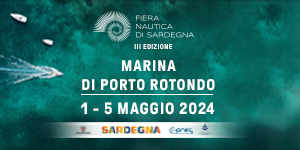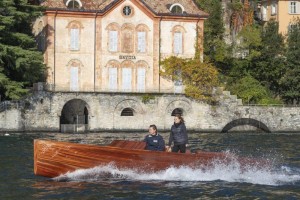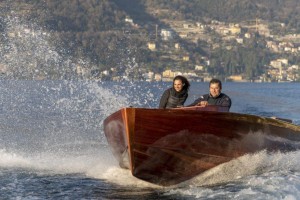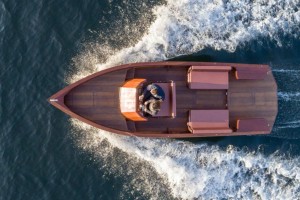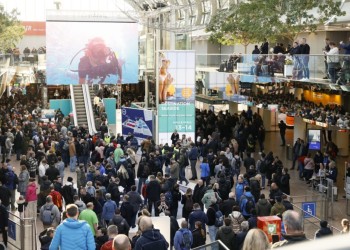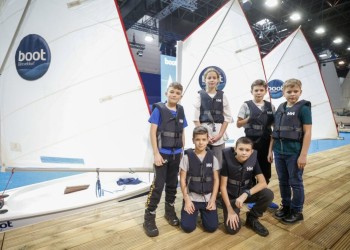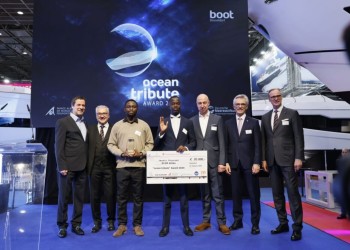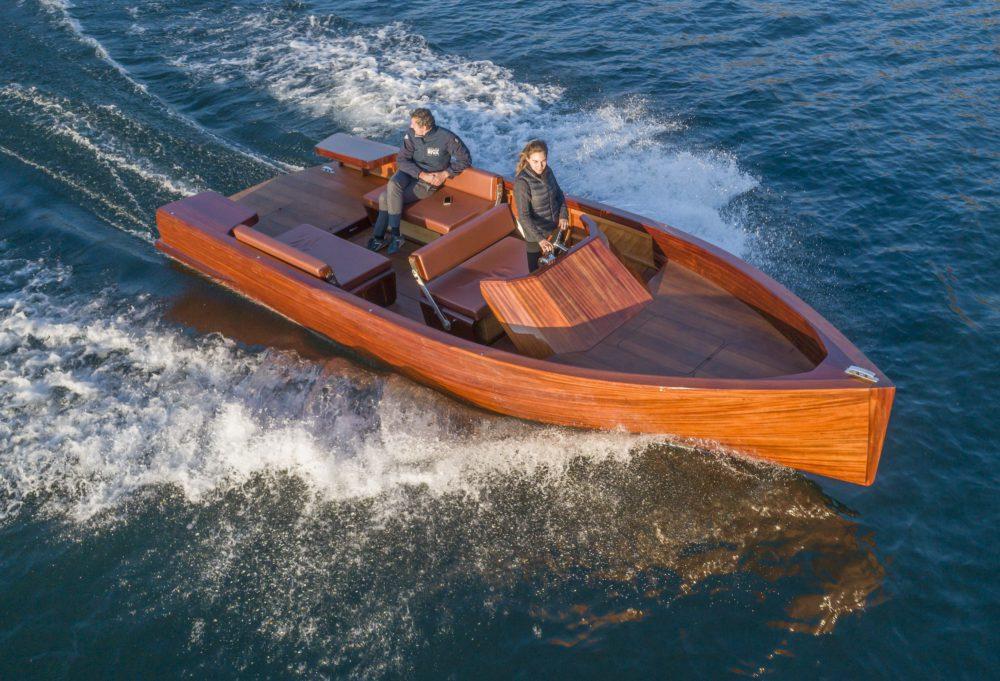
Boats and yachts with electric drive systems are the trend
Sustainable water sports and electric vehicle, the new trend
Sustainable water sports Electric vehicle in the future
Recreational boats and yachts with electric drive systems are the trend. This can be attributed to society's overall greater environmental awareness as well as stricter environmental requirements. How efficient and safe an electric boat drive is, depends to a large extent on the power storage, the core element of electrification. The measure of all things is lithium-ion accumulators. They serve their purpose both in electric drive systems as well as in operation in order to cushion peak current loads. From 12 to 14 March 2019 in Düsseldorf, boat and yacht builders can gather detailed information about what is technologically possible at "Energy Storage Europe", the leading international trade fair for the energy storage industry. In minute 51 of the feature film "Spectre", the title hero James Bond crosses the Altaussee, an Alpine lake in the Styrian Salzkammergut region of Austria. The 007 agent of the British secret service MI6, who is equipped with the license to kill, is on his way to the hunting lodge Seewiesen. Daniel Craig in the role of James Bond does not use a special boat for the crossing, which is prepared by the laboratory of "Q", the fictitious, ingenious head of research and development of the British secret service. Instead, he uses a simple, although progressive dinghy - too small to sit in comfortably, but extremely quiet and ecologically completely harmless in operation. The boat is motorised with an electrified outboard motor. This aggregate does not burn fossil fuels and thus does not produce any exhaust gases. With a rechargeable battery, it generates its driving energy emission-free.
Combustion engines at a turning point
The environmental impact of climate and health-damaging exhaust gases has largely encouraged the realisation that in the future, conventional combustion engines should no longer be used in motor vehicles; electric or hybrid engines are presently the most popular alternatives. Affected by this development are not only the means of transport on land, but also on water. The ban on internal combustion engines on inland waters as well as the comprehensive concept of sustainability have boosted the utilisation of electric or combined drive systems in water sports - well documented in the form of numerous exhibits at "boot 2019", the world's largest trade fair for motor boats and water sports (www.boot.de), which took place in Düsseldorf in January.
Looking for alternatives
According to the German Boat and Ship Builder Association (DBSV, www.dbsv.de), the water sports industry is very much aware of the topic of "electromobility". For years now, alternative drive concepts and their framework conditions have been worked on at different levels, says Claus-Ehlert Meyer of the DBSV. Notwithstanding this, the boat and shipbuilders, not unlike the automotive industry, are confronted with major challenges. The focus lies primarily on one question, namely on how the necessary electrical drive energy can be stored efficiently and safely in order to cover the greatest possible distances at the desired high speed without having to recharge, as one is accustomed to with conventional combustion engines.
Sustainability thought through from the outset
"Energy Storage Europe" (www.eseexpo.de), the leading international trade fair for energy storage, provides information on state-of-the-art storage technology in Düsseldorf from 12 to 14 March 2019. The Swiss battery system manufacturer ecovolta is one of the exhibitors (Hall 8b/D04). The Schwyz-based company, a division of ecocoach AG, will present the recreational motorboat "E-Commuter" from the Italian shipyard Ernesto Riva (https://cantiereernestoriva.it) at "Energy Storage Europe". The exhibit meets the criteria of "ecological sustainability in all respects", emphasises Daniele Riva, Managing Director at Ernesto Riva. It is made of 100 per cent wood as well as further sustainably produced and recycled materials. It has an integrated drive system developed by ecovolta. Paul Hauser, Chief Technology Officer (CTO) at ecovolta, points out some significant technical details: "The battery used has an energy capacity of 50 kWh and 400 V voltage. The resulting drive power of 90 kW enables a maximum speed of 25 knots. The boat can hold up to seven people and, at an average speed of 13 knots, is autonomous for between three and four hours. The charger has an output of 22 kW and therefore enables an 80 per cent charge in less than two hours." Although this compilation refers to an individual case, it gives an impression of the enormous potential offered by the electrification of sport and recreational boats.
Electric drive systems gain acceptance
In principle, every boat and every yacht can be electrified with the corresponding existing technology, Paul Hauser emphasises. The CTO is convinced that electric drive will also become established for boat engines in the long term, at least when it comes to attaining limited ranges on the water, i.e. five to six hours of sailing a day, without intermediate charging. Regarding longer ranges, sooner or later hybrid drive systems would probably become the first choice according to the current state of the art. Regardless of the type of drive, whether purely electric or just hybrid, powerful, safe energy storage systems are required in both cases in order to store and retrieve the electrical power needed for operation. "Rechargeable traction batteries form the core element of the electrification for purely electric drives. In hybrid applications, they act as a buffer or intermediate storage for the required electrical energy," explains Paul Hauser.
Lithium-ion accumulators are in the lead
Special attention should be paid to the installation of future-oriented storage technology during electrification. Lithium-ion rechargeable batteries will have priority in the foreseeable future, i.e. right up to the development of new storage technologies such as those based on solid-state rechargeable batteries. In comparison with a conventional lead-acid battery, lithium-ion batteries have up to five times the energy density, up to 40 per cent greater discharge depth as well as a greater number of charging cycles (lead: 1,200, lithium: 3,000). Furthermore, they are emission and maintenance-free, have a longer service life and are significantly faster to recharge. "While lead batteries take up to seven hours to reach 90 per cent of their charging capacity, lithium batteries take just one hour," says Hauser.
Integrated system solutions from a single source
Those who have decided to equip their boat or yacht with electric drive systems will discover significant added value. They do not only relate to the higher efficiency of electric motors compared to combustion engines or the lower operating and maintenance costs. Due to the fact that no exhaust gases are produced, owners can benefit from tax advantages depending on the legal situation. In the tourism segment, noise reduction also generates market advantages. Thus, there are many good reasons to choose electric drives for boat and yacht operation. However, care should be taken and caution should be exercised, states Paul Hauser: "In addition to all relevant performance aspects, safety should not be neglected. It is important to make sure that the energy storage devices are assembled in such a way that the storage cells used perform in a controlled manner, even when the current flows are high as a result of damage. Through a physically induced safety mechanism, a damaged single cell separates itself from the battery pack as well as from the current flow, minimising the risk of overheating and fire. A further weak point occurs when there are interfaces between the construction components of different manufacturers. This weakness can generally be avoided with a fully integrated system solution, i.e. everything from a single source with perfectly compatible construction components. In addition, attention should be paid that the batteries used belong to the appropriate protection class (International Protection Class) according to DIN EN 60529.
Costs for electrification are within reason
Not only the boat and ship building industry is committed to sustainability. It is expected that the breakthrough of hybrid technology with buffer batteries will also be seen in container and cruise ships, at least in the area of inland waterways. The implementation of sustainable drive technology is not only ecological, but also economically sensible and correct: "It depends on the cyclisation", says Paul Hauser and adds that in the case of boats with high operating times such as taxi boats, tourist boats etc., e-boats are more economical than conventionally driven boats. By the way: When it comes to acquisition costs, the expert sees signs of levelling without major legal adjustments as a result of increased sales of electrified boats and yachts; for example, in the sense that taxes are raised on the purchase of combustion engines in order to promote the use of environmentally friendly aggregates.
Battery technology in the production of boats
How important powerful and safe rechargeable battery storage systems are for efficient e-mobility, whether on land or at sea, is undisputed. In addition, as stationary storage devices, they also provide valuable services in boat production. On the one hand, with their help, for example in conjunction with a solar system, productionrelated power peaks can be cushioned cost-efficiently, keyword: Load peak capping. On the other hand, rechargeable batteries provide the necessary energy when the electricity fails. In this way, battery storage units that can be charged with excess electricity are also proving to be, as it were, a sustainable, "green" alternative to the diesel-powered emergency power generator in operation. You will find all the information relating to the use of rechargeable electricity storage at “Energy Storage Europe 2019“in Düsseldorf from 12 to 14 March 2019.





